See the 2020 Super Worm Moon over NYC and Washington, D.C. in these awesome photos
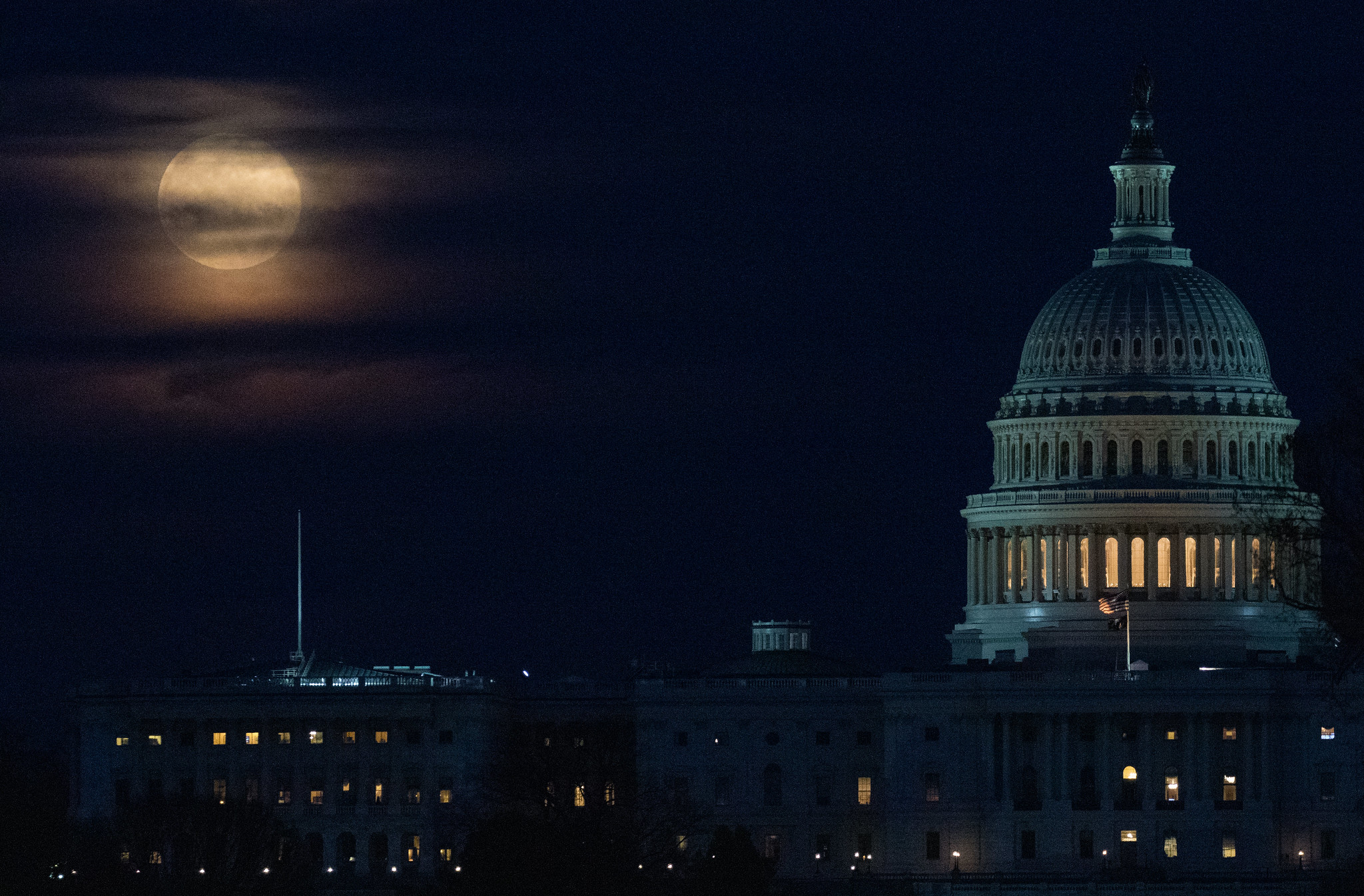
The supermoon on Monday (March 9) inspired some beautiful photography celebrating a close approach of the full moon to Earth.
Since the moon does not orbit our planet in a perfect circle, at times the full moon coincides with the satellite's closest approach to our planet. The full moon of March, known as the Worm Moon, arrived on Monday at 1:48 p.m. EDT (1748 GMT), and it reached perigee, its closest point to Earth, today (March 10) at 2:33 a.m. EDT (0633 GMT), nearly 13 hours later. At the time of perigee, the moon was 223,980 miles (360,461 kilometers) from Earth, compared to its average distance of 240,000 miles (384,400 km).
Related: Supermoon secrets: 7 surprising big moon facts
More: How the 'Supermoon' looks (infographic)
Practically speaking, it's hard to tell the difference in size with the naked eye. But supermoons still provide an opportunity for us to look up at the night sky and reflect on the significance of Earth's natural satellite, which has preserved much of the solar system's history, since there is no weather or atmosphere eroding its surface. This makes the moon an attractive target for science missions, human exploration and also photographs.
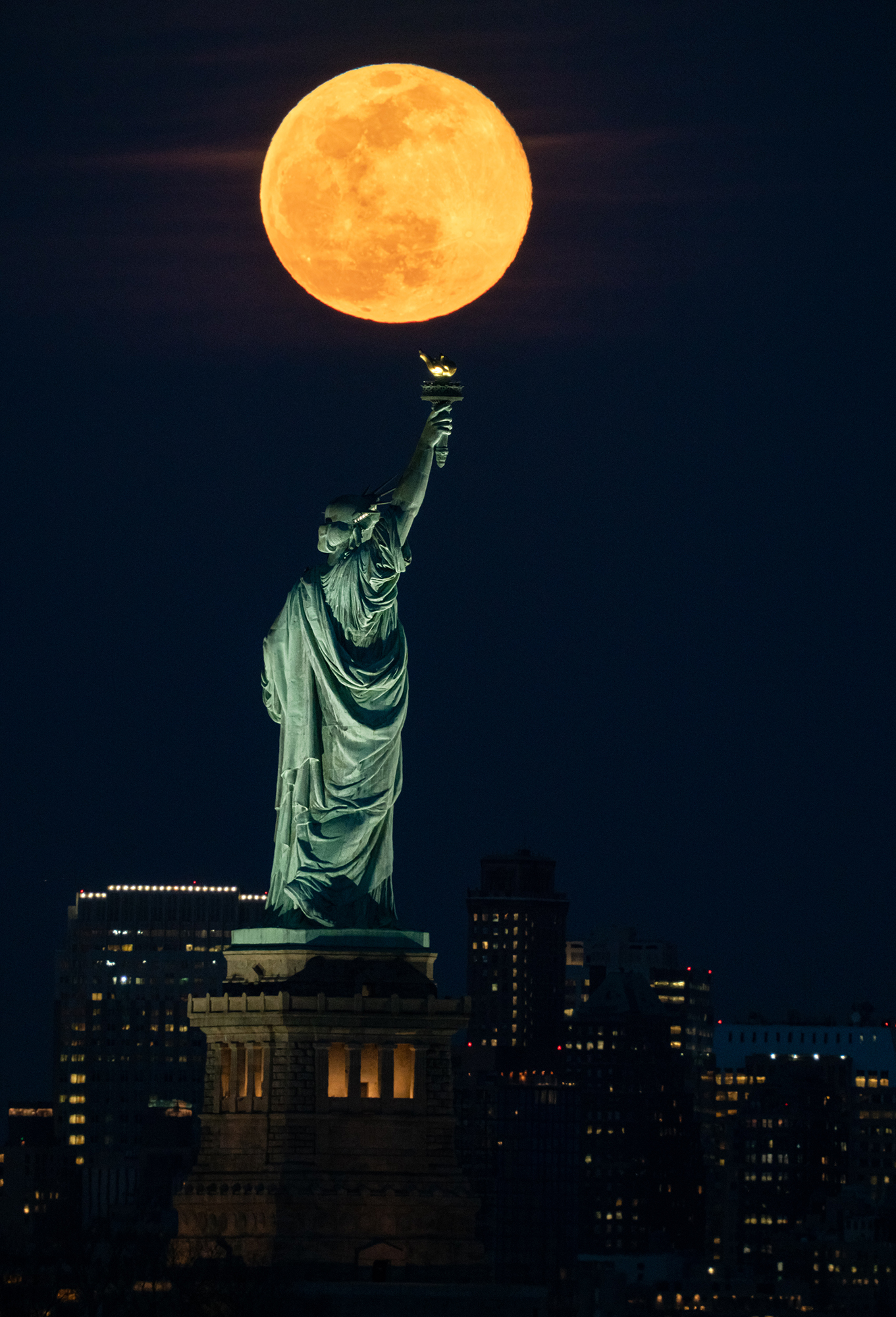
Astrophotographer and regular Space.com contributor Chirag Upreti took in the sights of New York City during the supermoon, including the shots you see here of the Statue of Liberty and the Empire State Building backdropped by the moon.
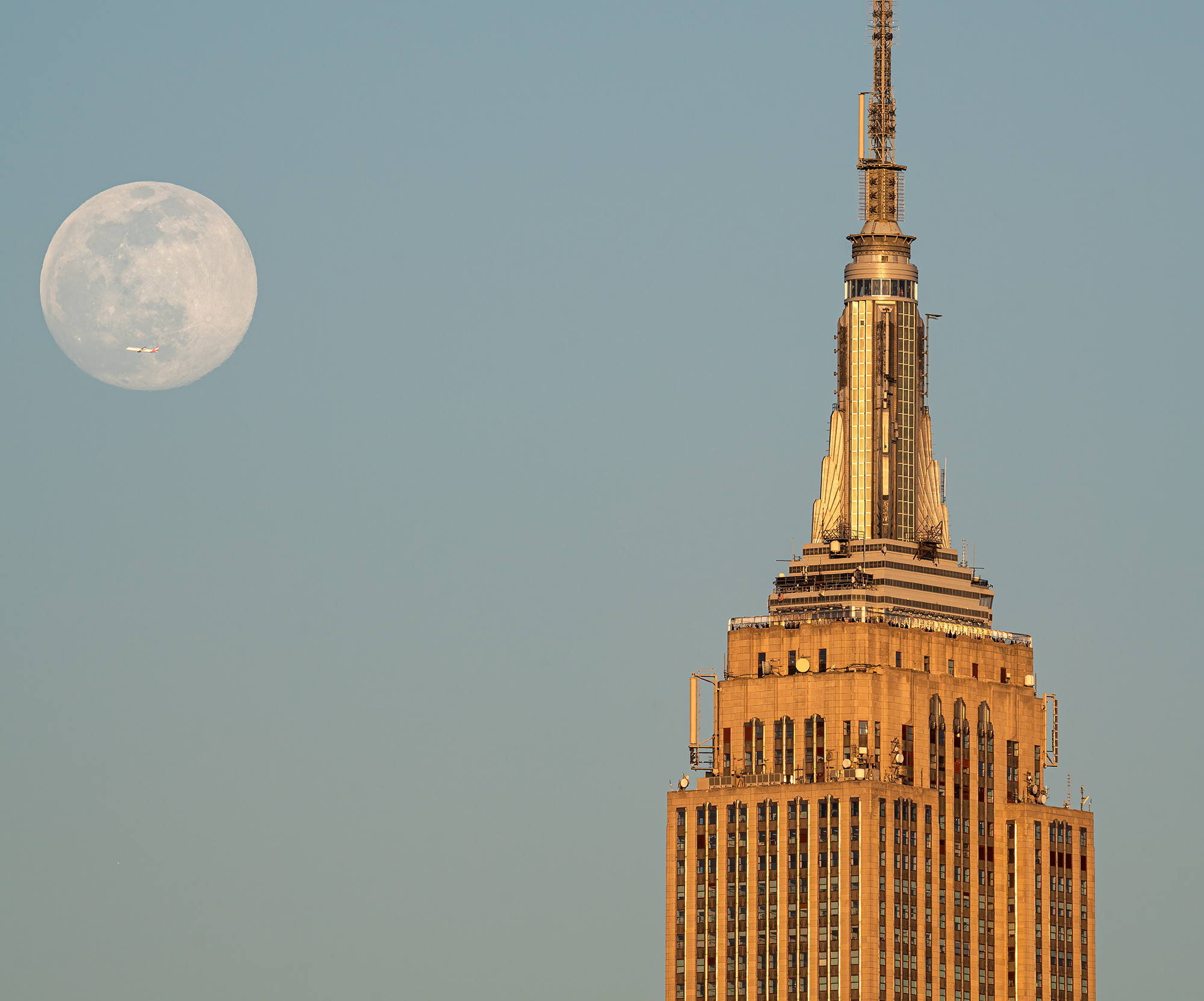
"A day after International Women's Day, the supermoon rises with Lady Liberty in the foreground," Upreti told Space.com in an email. "It was an epic moonrise, and as I clicked the shutter, I had to take time to view it visibly with the naked eye. The first thought in my mind was, since eons, humans must have stopped and gawked at a full moon rise when it's this clear. [It's] such a treat."
Related: The moon: 10 surprising lunar facts
Get the Space.com Newsletter
Breaking space news, the latest updates on rocket launches, skywatching events and more!
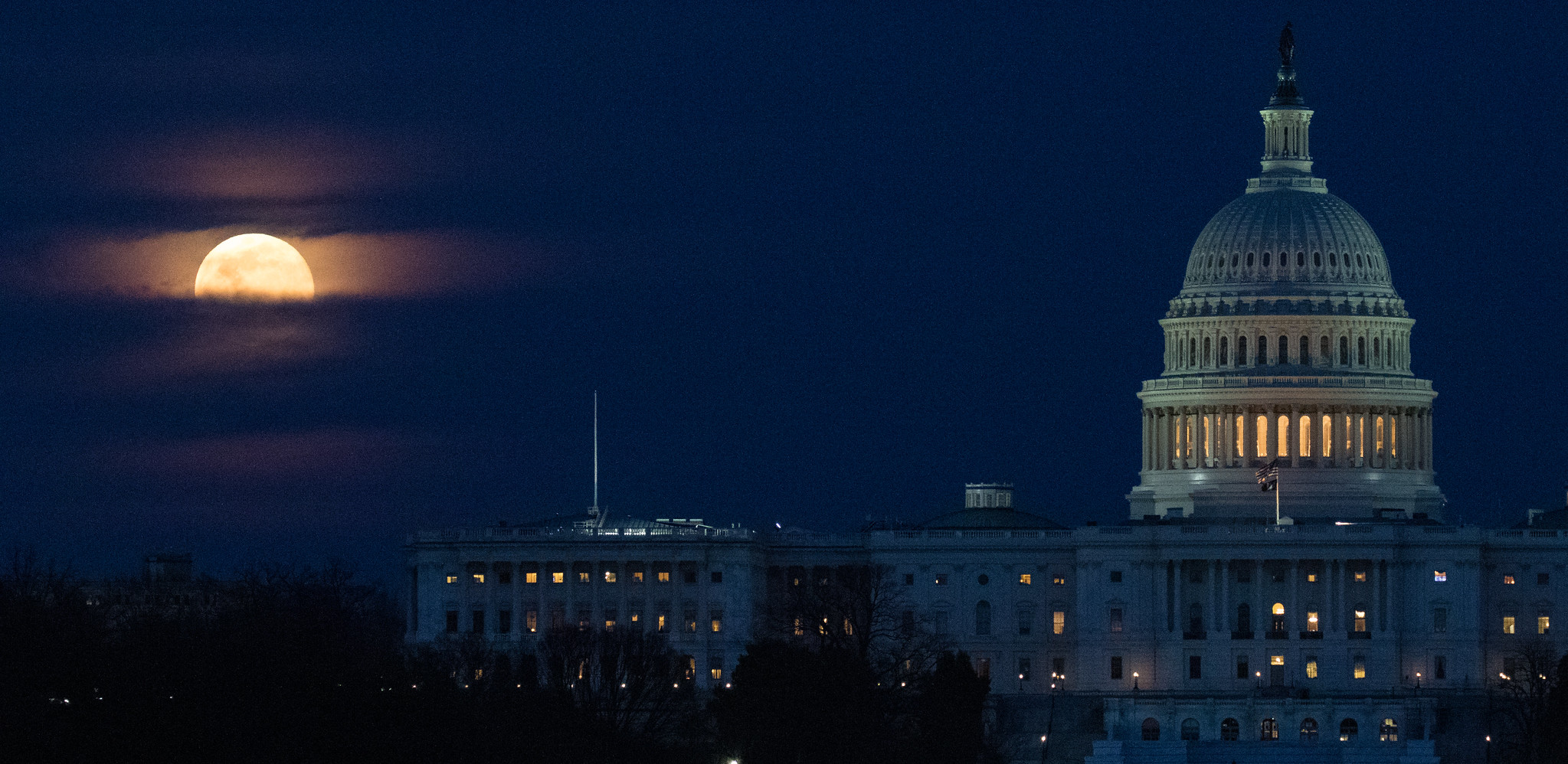
Another iconic American structure made it into NASA photographer Joel Kowsky's work from Washington. The moon, shrouded a little bit by clouds, pops up just to the side of the U.S. Capitol Building, where decisions about NASA's funding and direction are discussed by politicians.
One of the matters being talked about there right now is NASA's ability to bring humans back to the moon by 2024. The agency says it is committed to the goal, but it will also need to prepare a rocket, a spaceship, spacesuits and other equipment rapidly to reach the mark.
Related: Supermoon quiz! Are you super or just lost in space?
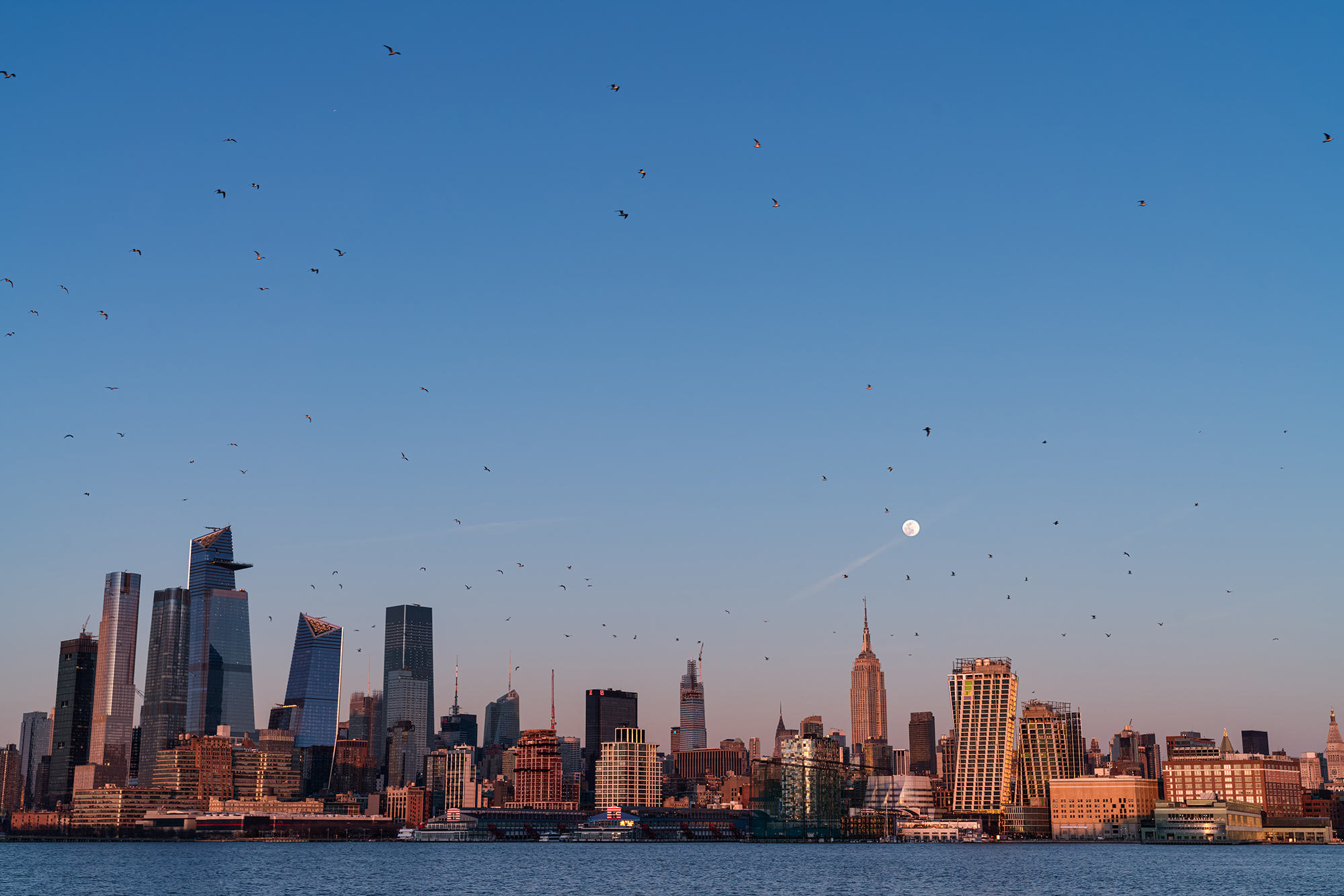
Back in New York, Upreti said he was glad of another shot that ties in the moon's connection to nature on Earth, as well as our urban activity.
"Seagulls briefly flocked out light at twilight was the almost-super moon (illuminated at greater than 99%) rose over the midtown skyline, with the Empire State Building in view, after sundown pastel hues," Upreti said. "It was a beautiful sight, that connected the urban scene with these birds."
- How the 'supermoon' looks (infographic)
- Amazing moon photos from NASA's Lunar Reconnaissance Orbiter
- Supermoon Quiz! Are you 'super' or just lost in space?
Follow Elizabeth Howell on Twitter @howellspace. Follow us on Twitter @Spacedotcom and on Facebook.
OFFER: Save at least 56% with our latest magazine deal!
All About Space magazine takes you on an awe-inspiring journey through our solar system and beyond, from the amazing technology and spacecraft that enables humanity to venture into orbit, to the complexities of space science.
Join our Space Forums to keep talking space on the latest missions, night sky and more! And if you have a news tip, correction or comment, let us know at: community@space.com.

Elizabeth Howell (she/her), Ph.D., was a staff writer in the spaceflight channel between 2022 and 2024 specializing in Canadian space news. She was contributing writer for Space.com for 10 years from 2012 to 2024. Elizabeth's reporting includes multiple exclusives with the White House, leading world coverage about a lost-and-found space tomato on the International Space Station, witnessing five human spaceflight launches on two continents, flying parabolic, working inside a spacesuit, and participating in a simulated Mars mission. Her latest book, "Why Am I Taller?" (ECW Press, 2022) is co-written with astronaut Dave Williams.
-
rod ReplyAdmin said:Photographers celebrated the first "supermoon" of the year by capturing some breathtaking images of the bigger-than-usual full moon over the U.S. Capitol and New York City.
See the 2020 Super Worm Moon over NYC and Washington, D.C. in these awesome photos : Read more
"The supermoon on Monday (March 9) inspired some beautiful photography celebrating a close approach of the full moon to Earth. Since the moon does not orbit our planet in a perfect circle, at times the full moon coincides with the satellite's closest approach to our planet."
I did briefly observe the Full Moon yesterday evening with unaided eyes. Someone today asked me about my telescopes and if I could see the Moon. I answered yes and they wanted more information. Turns out the individual was a flat earther and their thinking about the flat moon is very different, especially compared to what I see using my telescopes :)

